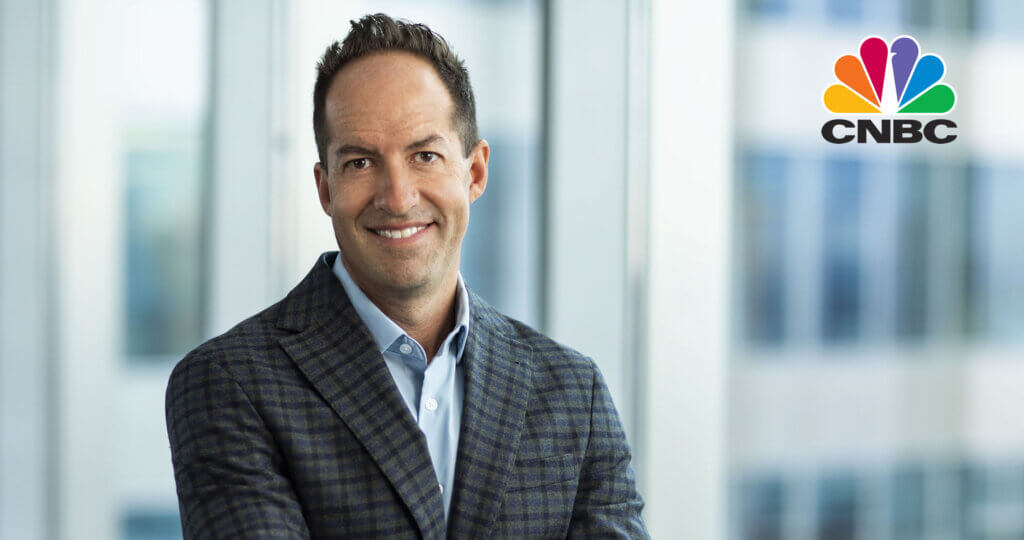Oakmark Global Fund – Investor Class
Average Annual Total Returns 06/30/23
Since Inception 08/04/99 9.41%
10-year 7.33%
5-year 6.06%
1-year 18.61%
3-month 4.26%
Expense Ratio: 1.11%
Expense ratios are from the Fund’s most recent prospectus dated January 28, 2023; actual expenses may vary.
Past performance is no guarantee of future results. The performance data quoted represents past performance. Current performance may be lower or higher than the performance data quoted. The investment return and principal value vary so that an investor’s shares when redeemed may be worth more or less than the original cost. To obtain the most recent month-end performance data, view it here.
Although the Oakmark Global Fund (“the Fund”) returned a solid 4.3% during the second quarter, it lagged behind the MSCI World Index’s return of 6.8%. For the first six months of 2023, the Fund maintained its lead on the index, returning 15.3% versus 15.1%. Since inception in 1999, the Fund’s compounded annual rate of return has been 9.4%, which compares to 5.7% for the MSCI World Index and 5.8% for the Lipper Global Fund Index.
For the quarter, our highest contributing securities were Alphabet (U.S.) and Amazon (U.S.), and our largest detractors were Alibaba (China) and Anheuser-Busch InBev (Belgium). From a sector perspective, our strongest contributors were information technology and financials, and our biggest detractors were consumer staples and real estate.
For the calendar six months, the stocks that contributed most to returns were Alphabet, Amazon, Ryanair Holdings (Ireland), Oracle (U.S.) and Mercedes-Benz Group (Germany). The stocks that detracted most from return were Bank of America (U.S.), NOV (U.S.), CNH Industrial (U.K.), Cushman & Wakefield (U.S.), and Glencore (Switzerland). From a sector perspective, our strongest contributors were consumer discretionary and information technology while energy and real estate were the largest detractors.
During the quarter, we initiated new positions in Corebridge Financial, Danaher and IQVIA Holdings. We eliminated our positions in Arconic, Cushman & Wakefield, NOV, and Tenet Healthcare.
The following is a brief description of our new holdings:
Corebridge Financial is a life and retirement company that was partially spun off from American International Group (AIG) through an initial public offering in September 2022. Corebridge has extensive, long-standing relationships with many of the largest financial institutions to sell various retirement products. It is one of the largest retirement service providers to the education market through VALIC Financial Advisors. It also operates a high-performing, seasoned life insurance business. The market is valuing the company as a variable annuity provider despite its much more diversified and stable earnings stream. Part of the discount is due to the lack of liquidity and an overhang from AIG’s significant ownership, which will eventually be brought to market. Trading at around five times our estimate of normalized distributable cash flow, the stock is highly attractive to us, and we are willing to wait for the ownership overhang to resolve itself.
Danaher is a global leader in life sciences that maintains a portfolio of businesses primarily focused on bioprocessing, life science tools, genomics and diagnostics. In our view, Danaher has an excellent track record of creating shareholder value through smart capital allocation and world-class operational execution. The firm’s Danaher Business System employs a rigorous, process-driven approach to operational improvement that’s helped accelerate organic growth and expand margins through multiple leadership regimes. Danaher’s business mix has shifted dramatically in recent years after a series of transformative acquisitions and divestitures. We believe these portfolio moves leave the company attractively positioned in some of the industry’s fastest growing, most profitable niches. The upgraded portfolio contains premiere assets levered to secular growth areas, like biologics, molecular diagnostics, and genomics, that support many years of high-single-digit revenue growth and margin expansion. Near-term headwinds related to the pandemic are overshadowing this attractive long-term outlook. Danaher sells diagnostic tests and critical inputs needed for manufacturing Covid-19 vaccines. Robust demand for these products during the pandemic boosted the stock price in 2020 and 2021. As Covid-19 demand normalized, Danaher experienced sales headwinds and channel destocking on these products, which pressured the stock. We believe these near-term headwinds will ultimately prove short-lived. Danaher now trades at a discounted valuation relative to peers and private market transactions, which provided an attractive entry point to invest in this high-quality, resilient business.
Fears about biotech funding and the sell-off in the broader life sciences area created an opportunity for us to invest in IQVIA during the quarter. IQVIA is a leading provider of clinical trials and health care technology and analytics formed through the merger of Quintiles and IMS Health in 2016. We believe that IQVIA is positioned at the heart of trends toward advanced therapeutics and personalized medicine and that it is the most levered clinical research organization (CRO) to decentralized clinical trials requiring digital capabilities. We think that IQVIA has additional growth opportunities from delivering real-world evidence to biopharma companies and other health care providers using data and software to meet regulatory and reimbursement mandates. CEO Ari Bousbib has a strong track record on operations and capital allocation and significant skin in the game through his large equity holdings in the company. We were pleased to be able to add IQVIA to the portfolio near a trough multiple of less than 15x our estimate of normal earnings.
We eliminated our positions in Arconic and Tenet Healthcare as they approached our sell targets and Arconic entered an agreement to be acquired. We exited our position in Cushman & Wakefield after numerous changes in leadership and personnel reduced our confidence in company management. We believe that NOV is still undervalued, but we opted to exit the position in favor of ConocoPhillips, which we think is a more attractive investment.
Geographically, we ended the quarter with 47% of the portfolio in the U.S., 34% in Europe, 14% in the U.K. and 5% in Asia as a percent of equity. Over the second quarter, the U.S., Germany and Ireland contributed most to return and China, Belgium and the U.K. detracted the most. For the calendar six months, the U.S., Germany and Ireland contributed the most to return while Belgium detracted from returns in the period.
We defensively hedge a portion of the Fund’s exposure to currencies that we believe to be overvalued versus the U.S. dollar. However, as of quarter end, the Fund’s currency exposure is unhedged.
We thank you for being our partners in the Oakmark Global Fund. We invite you to send us your comments or questions.
The securities mentioned above comprise the following percentages of the Oakmark Global Fund’s total net assets as of 06/30/2023: Alibaba Group 2.3%, Alphabet Cl A 4.5%, Amazon.com 3.1%, American Intl Group 1.9%, Anheuser-Busch InBev 2.2%, Arconic 0%, Bank of America 2.4%, CNH Industrial 3.3%, ConocoPhillips 2.3%, Corebridge Financial 1.3%, Cushman & Wakefield 0%, Danaher 1.3%, Glencore 2.0%, IQVIA Holdings 0.3%, Mercedes-Benz Group 3.8%, NOV 0%, Oracle 2.2%, Ryanair Holdings ADR 2.3% and Tenet Healthcare 0%. Portfolio holdings are subject to change without notice and are not intended as recommendations of individual stocks.
Access the full list of holdings for the Oakmark Global Fund here.
The Lipper Global Fund Index measures the equal-weighted performance of the 30 largest global equity funds as defined by Lipper. This index is unmanaged and investors cannot invest directly in this index.
The MSCI World Index (Net) is a free float-adjusted, market capitalization-weighted index that is designed to measure the global equity market performance of developed markets. The index covers approximately 85% of the free float-adjusted market capitalization in each country. This benchmark calculates reinvested dividends net of withholding taxes. This index is unmanaged and investors cannot invest directly in this index.
On occasion, Harris may determine, based on its analysis of a particular multi-national issuer, that a country classification different from MSCI best reflects the issuer’s country of investment risk. In these instances, reports with country weights and performance attribution will differ from reports using MSCI classifications. Harris uses its own country classifications in its reporting processes, and these classifications are reflected in the included materials.
The Fund’s portfolio tends to be invested in a relatively small number of stocks. As a result, the appreciation or depreciation of any one security held by the Fund will have a greater impact on the Fund’s net asset value than it would if the Fund invested in a larger number of securities. Although that strategy has the potential to generate attractive returns over time, it also increases the Fund’s volatility.
Investing in foreign securities presents risks that in some ways may be greater than in U.S. investments. Those risks include: currency fluctuation; different regulation, accounting standards, trading practices and levels of available information; generally higher transaction costs; and political risks.
The compound return is the rate of return, usually expressed as a percentage that represents the cumulative effect that a series of gains or losses has on an original amount of capital over a period of time. Compound returns are usually expressed in annual terms, meaning that the percentage number that is reported represents the annualized rate at which capital has compounded over time.
The percentages of hedge exposure of each foreign currency are calculated by dividing the market value of all same-currency forward contracts by the market value of the underlying equity exposure to that currency.
The information, data, analyses, and opinions presented herein (including current investment themes, the portfolio managers’ research and investment process, and portfolio characteristics) are for informational purposes only and represent the investments and views of the portfolio managers and Harris Associates L.P. as of the date written and are subject to change and may change based on market and other conditions and without notice. This content is not a recommendation of or an offer to buy or sell a security and is not warranted to be correct, complete or accurate.
Certain comments herein are based on current expectations and are considered “forward-looking statements”. These forward looking statements reflect assumptions and analyses made by the portfolio managers and Harris Associates L.P. based on their experience and perception of historical trends, current conditions, expected future developments, and other factors they believe are relevant. Actual future results are subject to a number of investment and other risks and may prove to be different from expectations. Readers are cautioned not to place undue reliance on the forward-looking statements.
All information provided is as of 06/30/2023 unless otherwise specified.









